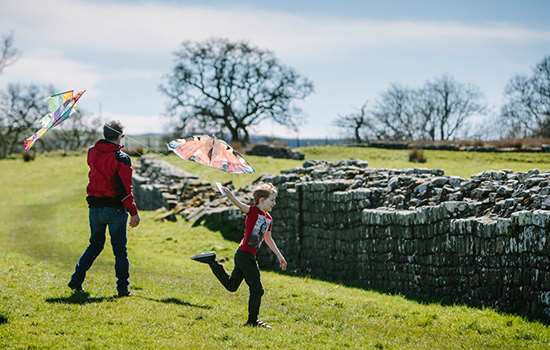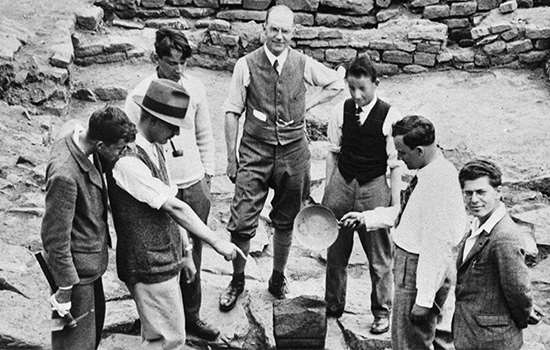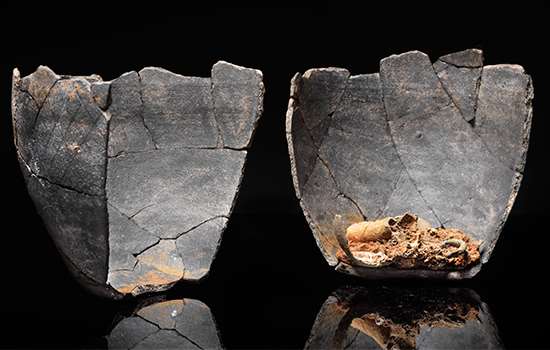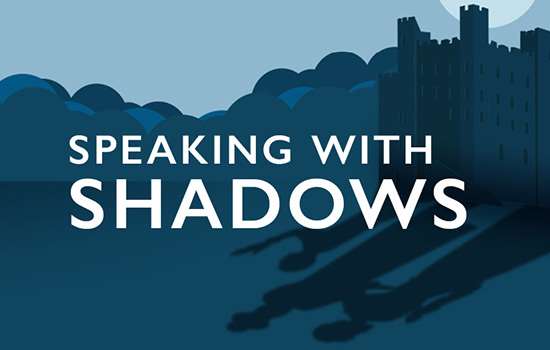Listen
In this final episode of the series Josie meets Andrew Roberts and Frances McIntosh to learn more about the people who lived at Birdoswald and what the site can tell us about how their identities changed over time. Burial urns discovered in a nearby field and now on display in the museum offer an intriguing insight into the lives and deaths of women and children living on the Wall. The Romanian poet Denisa Comănescu reads from her poem ‘A Birdoswald Sequence’ while local residents Malcolm Redman and Angela Stephenson tell us about their lives on the Wall today.
Listen to episode 6 and subscribe to Speaking with Shadows on your favourite podcast platform:
Gallery
The People of Birdoswald
Once sworn enemies of the Roman Empire, the Dacians became trusted protectors of its north-western frontier. They lived at Birdoswald longer than any other military unit, and left the deepest legacy. The names and symbols they left behind show that their identities were rich, complex and ever-changing. Not only were they loyal to the institutions of the empire, but they adopted local rituals and gods, while cherishing links to far-flung parts of the Roman world.
Explore their story and learn more about the diverse cultures on Hadrian’s Wall.
Read moreFurther Reading
- Hingley, Richard, Hadrian’s Wall: A Life (Oxford, 2012)
- Hodgson, Nick, Hadrian’s Wall: Archaeology and History at the Limit of Rome’s Empire (London, 2017)
- Southern, Patricia, Hadrian’s Wall: Everyday Life on a Roman Frontier (Stroud, 2016)
- Wilmott, T, Birdoswald Roman Fort: 1800 Years on Hadrian’s Wall (Stroud, 2001)
Episode Credits
Presenter: Josie Long
Producer: Katharine Kerr for Fresh Air
Contributors:
- Dr Andrew Roberts – Properties Historian, English Heritage
- Dr Frances McIntosh – Collections Curator for Hadrian’s Wall and North East, English Heritage
- Malcolm Redman – Owner of Bush Nook Guesthouse
- Denisa Comănescu – Poet
- Angela Stephenson – Historic Properties Steward, English Heritage
Explore More
-

Visit Birdoswald
Birdoswald has the best-preserved defences of any Wall fort, while just outside it is the longest continuous stretch of Hadrian’s Wall visible today.
-

Uncovering the Secrets of Hadrian’s Wall
The remains of Birdoswald Roman Fort have revealed more about Hadrian’s Wall than any other site along the Wall. Discover what some of the key finds tell us about the Romans and those who came after.
-

Death and burial rites at Birdoswald
A rare excavation of burial urns found at Birdoswald has allowed researchers to examine the remains of those who lived and died at the fort. Discover what the new research reveals.
-

Listen to more Speaking with Shadows
Explore more episodes of Speaking with Shadows, the podcast that listens to the people that history forgot.
-

History of Birdoswald
Explore Birdoswald through time and learn about the community who travelled across the empire and made the fort their home.
-

Shop: Walk the Wall
Explore Birdoswald’s historic landscape using our pocket-sized, waterproof guide. The two circular walks include maps, directions and points of interest.












